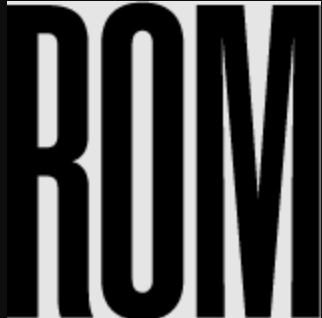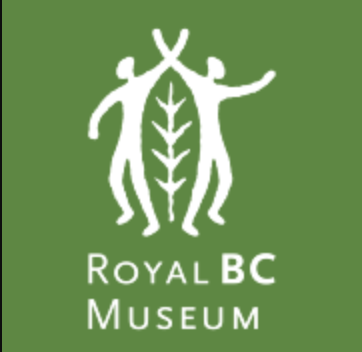Reclaiming Identity Through Online Spaces – A Critique of Settler Based Institutions' Online Presence
- Musings MMSt Blog
- Mar 9, 2024
- 6 min read
Updated: Sep 17, 2024
By: Alison May-Kosiewski
____________________________________
For museums to enliven and engage with objects, particularly those from Indigenous communities, they must become institutions who emphasize a relational approach towards displaying and curating objects. Collaboration and co-curation between the museum institution and Indigenous shareholders has illuminated the fact that many Indigenous communities have their own curatorial traditions, ways of perceiving, valuing, handling, caring for, interpreting, and preserving their cultural heritage.¹ 'Traditional' colonial museum methods of displaying Indigenous material are rightly often held in deep suspicion and resentment by source communities, and thus online spaces offer Indigenous communities an avenue to create and develop their own centres for learning. It has been increasingly taught to emerging and long-time professionals that “just as museums are diverse in the multiple [cultures… that] they represent so too are approaches to curation and cultural heritage preservation.”²
While there have been significant strides made in decolonizing museum spaces since the Truth and Reconciliation Committee’s Calls to Action were released, there does appear to be one area that many institutions, or at least those in Ontario, falter in - their online presence. To take a deeper look into this issue, let’s look at two examples of museum webpages that exist on opposite ends of the successful collaboration spectrum – the Royal Ontario Museum and the Royal BC Museum.
Given all of the work that the Learning Department has done at the Royal Ontario Museum in the past decade, engaging with people of colour,⁵ it could be assumed that more effort would be put into the museum’s webpages dedicated to Indigenous culture and material.⁶ With a department dedicated to planting ‘seeds’ throughout the museum to become meaningful metaphors which will foster sustained departmental and institutional growth,⁷ much of the work that appears throughout the ROM’s website and is spoken about in an article written by its members, appears to highlight an aesthetic of otherness.⁸ Their work, to both a typical visitor and museum professionals, has not yet produced an experience that intertwines Turtle Island’s Indigenous epistemological practice with those that exist across the globe into a cohesive moment.

On the page for the ROM’s Daphne Cockwell Gallery dedicated to First Peoples' Art & Culture, visitors are first greeted with a message that the gallery is under renovation, with “critical changes” expected. When we look at the page on Internet Archive’s Way Back Machine for February 8, 2019, very little in the gallery’s presentation has changed. The same images of items from the collection on display - the same short gallery description and information provided to the viewer in 2019 can be seen on the website today. In making few changes in their digital space, the museum perpetuates the belief that Indigenous culture is static.⁹ Very little is said about the communities which created the items in the museum’s collection; previously there was a small statement at the bottom about having a few Indigenous Knowledge Resource Teachers available in the gallery for four hours a day, Monday to Friday – outside of peak hours.
The ROM webpage today The ROM webpage in 2019
The Royal BC Museum’s webpage for their First Peoples Gallery on the other hand, is the exact opposite of the ROM’s webpage in nearly every way. It walks visitors through each portion of the exhibits on display, with images providing glimpses into the spaces, showing just enough to pique interest in a range of people. The names of the Nations and communities whose culture is being presented to the public are front and centre.¹⁰
While acknowledging the settler colonial past of the museum and the effects of object classification, the RBCM webpage highlights the importance of showing the continuation of the traditions of the North West Coast First Nations. In addition, the curators of the gallery chose to provide a rationale for the reader on topics such as who certain objects came from, the choice to stress cultural values as much as history and, shared ownership. Equally, they seek to help the community challenge conventional ideas around Indigenous art and production.
Both of these images, taken from the Royal BC Museum’s webpage on the First Peoples Gallery, illustrate a depth to the curator’s work in collaborating with North West Coast First Nations to develop knowledge and understanding in the Museum’s visitors.
Overall, the Royal BC Museum thrives in a space where the Royal Ontario Museum faltered. In providing a resource for visitors to understand North West Coast First Nations through a different lens, the Royal BC Museum disrupts what the Royal Ontario Museum Perpetuates. There is still of course hope; the gallery renovations occurring at the ROM may turn a page in the museum’s history.
Notes
1 Kreps, Christina. 2009. “Indigenous Curation, Museums, and Intangible Cultural Heritage.” In Intangible Heritage, 207–22. Routledge. https://doi.org/10.4324/9780203884973-16. 193.
2 Ibid.
3 Onciul, B. 2015. "Transforming Theory into Practice" in Museums, Heritage and Indigenous Voice: Decolonizing Engagement (1st ed.). Routledge.
4 Pilcher, Jeremy, and Saskia Vermeylen. 2008. “From Loss of Objects to Recovery of Meanings: Online Museums and Indigenous Cultural Heritage”. M/C Journal 11 (6).
https://doi.org/10.5204/mcj.94. Paragraph 6.
5 Ng, Wendy, J’net Ayayqwayaksheelth, and Sarah Chu. 2022. "From Roots to Seeds: Authentic Indigenous Museum Education." Journal of Museum Education 47, no. 1: 18-31.
6 Onciul, "Transforming Theory into Practice.” Onciul mentions that mixed media is a space where cultural institutions often falter to make appropriate choices in what and how Indigenous culture is presented to the public for show.
7 Ng et. al. “From Roots to Seeds…,” 26.
8 Eriksen, T. H. 2001. “Between universalism and relativism: A critique of the UNESCO concept of culture,” In J. K. Cowan, M.-B. Dembour & R. A. Wilson (Eds.), Culture and rights: Anthropological perspectives (pp. 127-149). Cambridge: Cambridge University Press.
9 Saphinaz-Amal Naguib. 2004. “The Aesthetics of Otherness in Museums of Cultural History. ” in Tidsskrift for kulturforskning. Volum 3, nr. 4. s. 5-21. http://ojs.novus.no/index.php/TFK/article/view/357/355 9.
10 Bienkowski, Piotr. 2013. "A critique of museum restitution and repatriation practices." The international handbooks of museum studies. 431-453. https://www.academia.edu/42057878/A_critique_of_museum_restitution_and_repatriation_practicesLinks. 4.
Bienkowski states that the work undertaken by the Royal BC Museum has the power to “restore and strengthen Indigenous cultural knowledge that is embodied within museum artifacts. The advantages are mutual, of course, with community-based research feeding back it curatorial knowledge and museum databases.”
Works cited
Bienkowski, P. (2015). "A critique of museum restitution and repatriation practices". International Handbooks of Museum Studies: Museum Practice. 431-453. https://www.academia.edu/42057878/A_critique_of_museum_restitution_and_
Eriksen, T. H. 2001. “Between universalism and relativism: A critique of the UNESCO concept of culture". J. K. Cowan, M.-B. Dembour & R. A. Wilson (Eds.), Culture and rights:
Anthropological perspectives. 127-149. Cambridge: Cambridge University Press
Kreps, Christina. 2009. “Indigenous Curation, Museums, and Intangible Cultural Heritage.” Intangible Heritage. 207–22. Routledge. https://doi.org/10.4324/9780203884973-16.
Onciul, B. 2015. "Transforming Theory into Practice" in Museums, Heritage and Indigenous Voice: Decolonizing Engagement (1st ed.). Routledge.
Pilcher, Jeremy, and Saskia Vermeylen. 2008. “From Loss of Objects to Recovery of
Meanings: Online Museums and Indigenous Cultural Heritage”. M/C Journal 11 (6).
Ng, Wendy, J’net Ayayqwayaksheelth, and Sarah Chu. 2022. "From Roots to Seeds: Authentic Indigenous Museum Education." Journal of Museum Education 47, no. 1: 18-31.
Saphinaz-Amal Naguib. 2004. “The Aesthetics of Otherness in Museums of Cultural History.” Tidsskrift for kulturforskning. Volum 3, nr. 4. s. 5-21.
Image Appendix
Royal Ontario Museum Logo. Source.
Image of Sitting Bull’s war bonnet and case in the Royal Ontario Museum’s webpage carousel. Source.
Image of the Totem Hall at the Royal BC Museum; monumental carvings from Kwakwaka’wakw, Heiltsuk, Nuxalk, Gitxsan, Haida and Nuu-chah-nulth communities. Source.
Royal BC Musem Logo. Source.
Image of an Inuit child's summer bonnet in the Royal Ontario Museum’s webpage carousel. Source.
Screenshot of the Daphne Cockwell Gallery dedicated to First Peoples art & culture webpage from March 1, 2024. Source.
Screenshot of the Daphne Cockwell Gallery dedicated to First Peoples art & culture webpage, from February 8, 2019. Source.
Screenshot of the Royal BC Museum’s Totem Hall exhibit description. Source.
Screenshot of the Royal BC Museum’s Haida Argillite Carving exhibit description. Source.




















Comments